|
GENDER BENDERS
Who's really who?
That’s the trouble with these modern haircuts, says Stuart Campbell
– you just can’t tell who’s hardcore and who’s casual any more.
Hello viewers! Let’s talk about sex!
And by sex, of course, I mean videogaming taxonomy.
Because just like with sex, videogamers nowadays break down into two
basic “genders” – hardcore and casual. While recent innovations in
the console world (such as Xbox Live Arcade and the invention of the
Nintendo DS) have broadened the phenomenon, nowhere is this gaming
apartheid more strikingly institutionalised than in the place it was
born - the ironically-named PC. And as with men and women, everyone
thinks they know which is which, and sometimes everyone’s
frighteningly and completely wrong.

This is the awesome freeware shooting game
Warning Forever. You should literally,
in real life, even where
important business decisions are concerned, not trust anyone
who
can
look at this screenshot without immediately wanting to grab a joypad
and play it.
The very fact that you’re reading a PC
gaming magazine almost certainly means that you’d classify yourself
as a “hardcore” gamer - after all, who spends four quid just to read
about a pastime that they’re only casually interested in, right?
You’ve probably spent quite a lot of money buying or upgrading your
PC so that it can play the latest blockbuster games in their very
prettiest forms – you may well have spent more on your latest
graphics card than some casual player forked out on their entire
setup. (Heck, I’m old enough to remember when a fairly basic gaming
PC came in at £1500 just for the main box, not the £299 you can pick
up a pretty capable complete system including a nice flat-panel
monitor for these days.)
You’re serious about your
games. You can correctly punctuate every title in the Vampire: The
Masquerade series. You wouldn’t dream of playing any kind of
racing game with a joypad rather than a steering wheel and pedals.
You’d actually genuinely consider spending £35, of your own money that you worked hard
to earn, on something that simulated the experience of driving a
passenger locomotive from Derby to Nottingham on a Tuesday afternoon
in October (and another £150 on a special “train yoke” controller to
play it with,
too). And you wouldn’t even talk to someone who’d racked up fewer
than 100 hours in World Of Warcraft when you met them at the
real-ale convention.
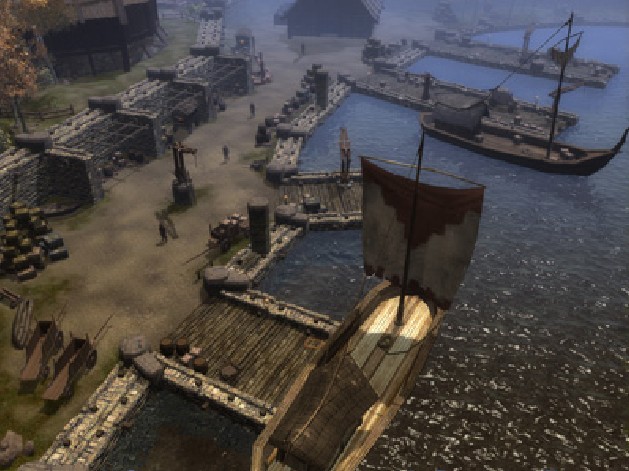
This is a pic of Neverwinter Nights 2: Mask Of
The Betrayer. I’ve included it mostly because writing its full name
in this caption gets my word count up without me having to think of
anything funny.
The stereotypical “casual” gamer is
equally easy to identify. He – or Heaven forbid, there’s a very real
possibility that it might actually be a she – doesn’t buy games
magazines. (They’re confused and frightened by the idea of any game
that takes place in three dimensions, and just a glance at half of
the screenshots in TPCG would give them a headache from trying to
figure out what on Earth was going on.) Their PC is probably barely
up to running Half-Life 2 in 800x600 with anti-aliasing turned off.
They’ve never been inside a branch of GAME in their lives, let alone
a LAN party. And get this –they’re not even all that interested
in orcs. I know! It’s crazy!
But hang on. There’s a bit of a
problem with these definitions, and it’s this: they’re bollocks. The
truth, gentle viewer, is that YOU’RE the casual around here. That
housewife playing Bejewelled 2 in between the dusting and the
hoovering is ten times more “hardcore” than you. She’s the one who’s
actually keeping all the traditional values of gaming alive, while
you populate the bland mainstream herd. And if you’ve just
spluttered your lukewarm coffee back into its dirty mug at that
assertion, maybe you ought come along for the ride while we examine
the facts of the matter.
So-called, self-styled “hardcore” PC
gamers, y’see, play broadly three kinds of games. (This in itself,
incidentally, already shoots a hole in that definition – surely a
truly hardcore gamer would embrace all genres, but when did you last
see a cute Mario-style platformer, shallow arcade racer or 2D
vertically-scrolling shoot-‘em-up on the full-price PC shelves at
Gamestation?) And as we’re about to find out, none of them are even
really “games” at all.
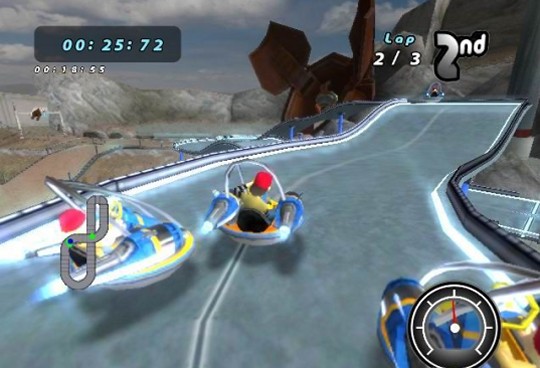
On the PC, the only way to be allowed to write
a fun kart racer
is
to hide it inside a complex management sim like Thrillville.
PC GAME TYPE 1: THE
WORK SIMULATOR
The first category of modern PC gaming
encompasses a much wider range of things than the s-word
conventionally implies. What we’re talking about here is any game in
which you primarily pretend to perform some fairly unremarkable
real-life activity – driving a vehicle, playing a sport or even
doing a job (such as managing a football team, being an army general or running a
business). These are the titles chosen by players who, deep down,
despise “gaming” as a silly and childish pastime unfit for grown
men.
The only way they can permit themselves to be entertained by
something as fundamentally juvenile as moving blobs of coloured
light around a screen is to imagine it as a form of work, anchored
in grim reality. So even in ostensibly arcadey genres like racing
games and football, PC games are staid and serious. There are no
Ridge Racers on the PC, with wildly exaggerated powerdrifts and
concept cars that look like Pac-Man, and no Mario Karts – driving
games have to feature painstaking “realistic” mathematics, in
pursuit of the ridiculous fantasy that literal simulation can ever
come within a million miles of the feeling of sliding sideways
towards an all-too-real brick wall or tree at 95mph with your life
flashing in front of you. Similarly, PC football games can expect to
be derided as “frivolous” - see FIFA 08 last month - unless there
are at least 16 different controls for slightly different kinds of
kick. (Never mind that in real life most footballers can’t even
count that high – since when was football, in the words of the
review, “sophisticated and intelligent”?) And so on.
Essentially, the mantra of the simulator fan is “If it’s fun, you’re
doing it wrong”, and that’s not a sign of someone who loves games.
People with jobs don’t, after all, tend to describe themselves as
“hardcore plumbers”. And if you’re sleeping with someone but would
be embarrassed if your friends saw you out with them in public, then
what you’ve in fact got there, friends, is a casual relationship.
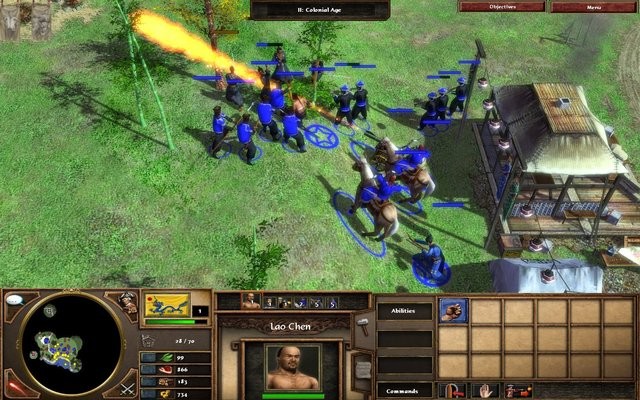
Age Of Empires 3: The Asian Dynasties – see
Neverwinter Nights 2: Mask Of The Betrayer.
PC GAME TYPE 2: THE
ADVENTURE
The second category of modern PC gaming comprises the likes of
Bioshock, Half-Life 2, Tomb Raider Legend and so on, as well as more
obviously narrative-led genres like point-and-clickers. The unifying
feature of these games is linearity, with there rarely being any
point in playing through the game more than once and with the plot
never going backwards. (Think of quicksaves as the technological
equivalent of a nice leather bookmark.)
In something like Bioshock, the hero is really only a device for
telling the story through – in fighting off the Big Daddies, all the
player is really doing is turning a handle to keep a gramophone
playing. That’s why you can’t die – nobody wants to have the last
two pages of a chapter read to them a dozen times before moving onto
the next one, do they? (The likes of Tomb Raider Legend are even
more transparent about their railroading – despite the illusion of
an open environment brimming with possibilities, levels are always
constructed for a single solution, and if you can see a ledge you
can be damn sure you’re meant to shimmy across it.)
Few human impulses are more inherently passive than the desire to be
told a story, even if Mummy won’t read you the next part or let you
stay up to watch the next episode until you’ve done all your
homework. If you’re an adult and still can’t go to sleep at night
until you’ve heard about a brave sword-wielding warrior rescuing a
beautiful princess from an evil wizard’s castle in a world of
mystical dragons and horrible goblins and altogether too many adjectives, you’re – well, frankly
I don’t know what you are, but I sure as heck wouldn’t call it a
“hardcore toddler”. Of the three main divisions of PC gaming,
adventures (as defined here) are the closest things to proper
videogames, but they’re still really just what in the old days we
called “interactive movies”. It’s just that these days they’re a
little more interactive.
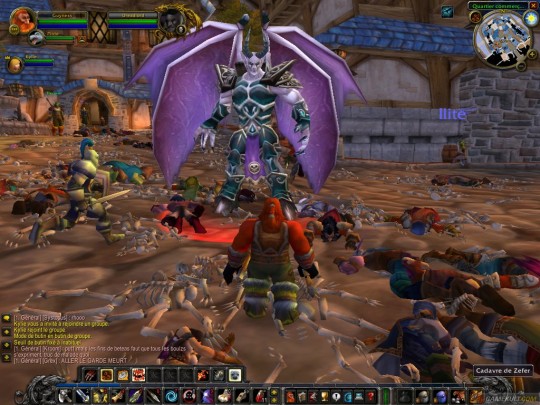
First there was a world. Now, sadly,
there is a Warcraft of it.
PC GAME TYPE 3: THE ALTERNATE REALITY
The most obvious non-games played by PC owners, of course, are the
MMOs. Here, not only is the word “hardcore” inaccurate, the word
“gamer” is borderline as well – WoW and Eve and Everquest and all
the rest really belong to the same family as MySpace and Facebook
and Habbo Hotel, not Fallout and Oblivion and (hngh) Planescape:
Torment. To be more specific, if something has neither an end nor
scoring, it’s not a game – it’s social networking with graphics.
There’s absolutely no real core difference between the activities of spending a
couple of hours in WoW after work and spending a couple of hours
down the pub drinking and chatting and playing the fruit machine, except that most pubs don’t charge just to let you in
and playing WoW is really, really unlikely to ever lead to
you getting laid.
(While we’re sort of on the subject, incidentally, I originally
wanted to have some illustrations for this feature depicting a mumsy-type
lady as a so-called hardcore gamer, in order to catch the reader’s eye,
pique their curiosity and draw
them in. Unfortunately, when I Googled for “hardcore housewife”, the
results were really quite unsuitable. Anyway, back to the feature.)
Again, then, since alternate-reality titles aren’t games in any
meaningful sense of the word, it logically follows that the group of
people who use them avidly couldn’t properly be described as “hardcore gamers”. I’d
call that a pretty comprehensive nailed-shut case, frankly.
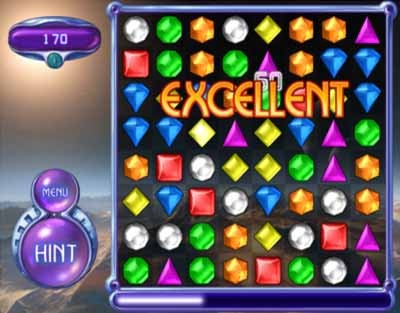
We probably ought to have a picture of
Bejewelled somewhere in the feature, just
in case you’re so incredibly “hardcore” that you don’t even know
what it looks like.
So we’ve established who ISN’T a
hardcore gamer. But if you’re not one, how can we possibly make a
case for the menopausal lady matching up the lines of little
coloured gems?
Well, the defining characteristic of all good game design - not just
videogames - is the marriage between accessibility and depth. If you
can create a game that anyone can pick up, understand and start
playing in seconds without having to even glance at an instruction
manual, yet which players will still be organically learning the
subtleties of, and developing new tactics and strategies for, hours
and days and weeks later, then you're a great designer. And the fact
of the matter is, dear viewers, that PC gaming - at least the sort of PC gaming that magazines like the one
you’re reading now are chiefly concerned with - left the first half of that
equation lying dead in a cold dark ditch about 10 years ago.
It’s easy to make a complicated game. When you’re writing for the
PC, any braindead idiot can just define a new button for every situation that
might arise at any given moment. (You’ve got about 100 of them at your
disposal, after all). It’s simple to take the incompetent designer’s
options of either forcing would-be players to read the manual for an
hour before they can dare to start, or – even worse – through a
half-hour-long unskippable tutorial that makes people want to stab
you in the eyes. But taking that easy option
isn’t “hardcore”, it’s the exact opposite. Not bothering your arse
because you can just be lazy and make the poor player do all the
tedious learning work – well, what could be more “casual” than that?

Like most so-called “casual” games, the
one-button Lightning Break demands
every second of your attention and absolutely undivided
concentration
if you’re going to make your way through its against-the-clock
levels.
Mrs Bejewelled (41), on the other
hand, is the epitome of uncompromising. Sit her down with a fiddly,
overblown game with a million and one controls and an impenetrable
demon-filled plot and she’ll shrug and tell you where to shove it.
You’ve got about 20 seconds to get her hooked or the gong will sound
and you’ll get yanked off the stage. Not for her the meek,
sheep-like compliance of the typical PC gamer – “I can’t play
this unless I buy a whole new PC with DX10, a dedicated physics card
and half a gig of graphics memory in order to improve the quality of
the shadowing by 3%, you say? Oh, okay then” – she’s got stuff do to and
you’re wasting her damn time.
And THAT, dear viewers, is the true definition of a hardcore
gamer. These are the people that are finally driving gaming into the
mainstream, by forcing it to be accessible again, even as the
shrinking group of embattled nerds who would lay claim to the term
desperately try to keep it chained to the radiator in the dank
basement of their little elitist ghetto. They’re the mums
throwing open the curtains as pasty overgrown adolescents cower in
the musty shadows of their bedrooms, trying to hide the underwear
catalogue. In their unflinching dedication to videogaming’s original
ideals they’re the saviours of its soul, and the pioneers
duct-taping a torch to its gunbarrel to light the path to the
future. I love you, Mrs Bejewelled.
-------------------------------------------------------------------------------------
|
TOTALLY HARDCORE #1: Geometry Wars
Recently brought to the PC via Steam from its original home on Xbox
360 at the bargain price of just £1.99, Geometry Wars: Retro Evolved
(you can tell it’s a PC game at heart because it’s got a needlessly
long title with a colon in it) is videogame design at its most
classical. You can explain it in two seconds – “Move with this,
shoot with this, kill everything, GO!” – but the longer you play
it the more strategic depth it reveals and, indeed, evolves. In
truth, it’s actually inferior in that respect to the PC-originated
freeware tribute game Grid Wars 2, to the extent that Bizarre
Creations had the latter game pulled under legal pressure when they
realised it was better than its inspiration. (But it’s still around
if you know where to
look not very hard.)
Geometry Wars isn’t trying to be a movie or a nerd convention or a
replication – this is videogaming at its most abstract and pure and
stripped-down, and therefore the very hardest of hardcore. It’s 2D
and it’s simple, but try playing it “casually” and see how far you
get.
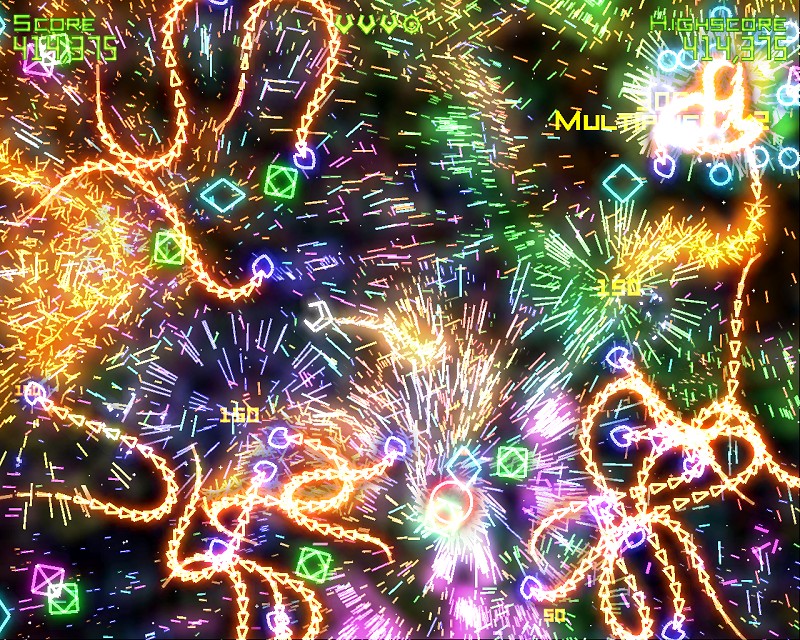
There’s a pretty solid rule of thumb about
games – anything that looks like
a firework display in a neon-sign factory is usually going to be
excellent.
Anything that looks like Championship Manager is almost certainly
rubbish.
TOTALLY HARDCORE #2: Peggle
In fact, Peggle is practically a hardcore/casual crossover title.
It’s got all the accessibility of old-school game design, but with
enough maths for realism nerds. (And also unicorns, because PC
owners basically won’t play anything that doesn’t have some sort of
fantasy animal in it.) Like the most complex and insanely involved
beat-‘em-ups, players can choose their own levels of depth to play
it at – from painstakingly planned precision to just firing some
balls in and clapping your hands as they bounce around noisily – and
still achieve progress on their own terms. That takes real design
sophistication, but like with the best football referees, when it’s
done right you don’t even notice it’s there.
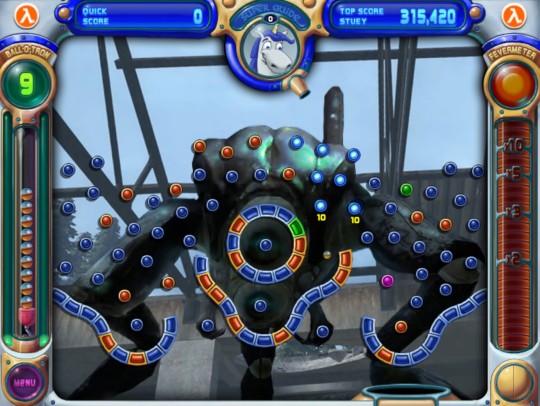
The recent Half-Life-themed Peggle Extreme is
the most explicit interracial marriage between
the worlds of hardcore and casual gaming yet. It’s probably going to get
teased a lot at school.
TOTALLY HARDCORE #3: Art Is Dead
Gamers and the games industry alike are constantly whining about not
being afforded the same level of critical respectability as other
cultural forms like books and movies, but there’s a good reason for
that – 99.2% of games are utterly culturally worthless. (The fact
that lots of people play them and get enjoyment out of them doesn’t
change that one iota – lots of people play pool down the pub and
enjoy it, but that doesn’t make it an artform.) Which makes
something like Art Is Dead one of the most high-minded games ever
made. It might be just a Time Crisis-type point-and-shoot game, but
exposing players to the entire history of painting from Da Vinci to
Warhol while they’re blasting blends instant accessibility and
mental stimulation in a way that’s truly hardcore.
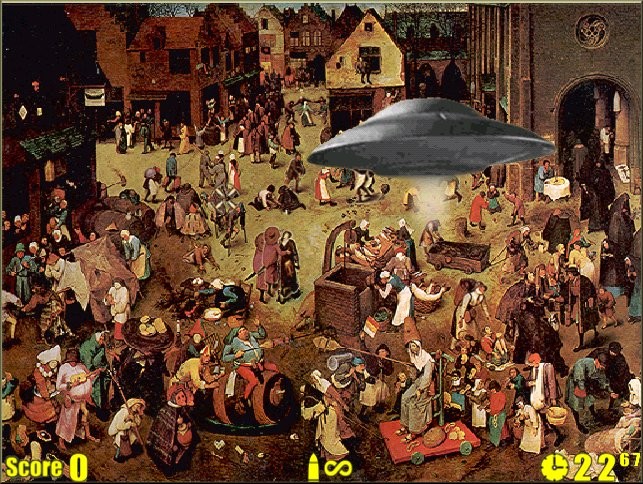
I’m pretty sure there hasn’t been a painting
painted yet that wouldn’t
be improved by the addition of a whacking great UFO in the middle.
TOTALLY HARDCORE #4: Stepmania
If you’ve ever seen the truly extreme Japanese dancing-game players,
you’ll realise just how utterly ridiculous it would be to describe
them as “casual” gamers. Yet Stepmania (as well as the many
dancing/rhythm action games that inspired it) is the simplest and
most accessible game invented since Pong. If you forget about the
plastic-mat gimmick and approach it as a pure videogame, all you
need is one hand and four cursor keys, yet it’s both enjoyable for
little kids playing it for the first time, and infinitely
challenging for experts on their millionth attempt. Try to make an
eight-year-old play Starcraft 2, on the other hand, and you’ll find
yourself on a child-abuse register.
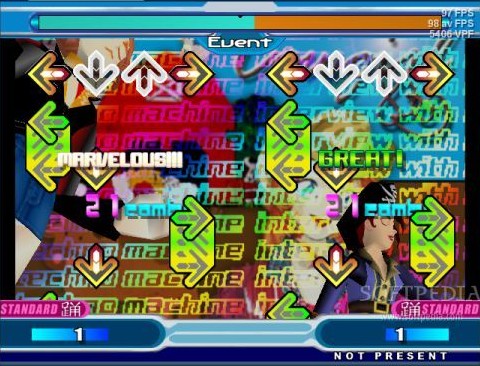
And unlike most PC games, it caters for people
who
like
musical genres other than screechy goth metal, too.
|
|

